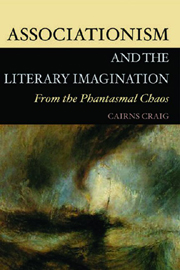Book contents
- Frontmatter
- Contents
- Acknowledgments
- Abbreviations
- Introduction: A Chain of Associations
- 1 ‘Kant has not answered Hume’: Hume, Coleridge and the Romantic Imagination
- 2 Signs of Mind and the Return of the Native: Wordsworth to Yeats
- 3 Strange Attractors and the Conversible World: Hume, Sterne, Dickens
- 4 The Mythic Method and the Foundations of Modern Literary Criticism
- 5 Chaos and Conversation: Pater, Joyce, Woolf
- 6 The Lyrical Epic and the Singularity of Literature
- Bibliography
- Index
2 - Signs of Mind and the Return of the Native: Wordsworth to Yeats
Published online by Cambridge University Press: 12 September 2012
- Frontmatter
- Contents
- Acknowledgments
- Abbreviations
- Introduction: A Chain of Associations
- 1 ‘Kant has not answered Hume’: Hume, Coleridge and the Romantic Imagination
- 2 Signs of Mind and the Return of the Native: Wordsworth to Yeats
- 3 Strange Attractors and the Conversible World: Hume, Sterne, Dickens
- 4 The Mythic Method and the Foundations of Modern Literary Criticism
- 5 Chaos and Conversation: Pater, Joyce, Woolf
- 6 The Lyrical Epic and the Singularity of Literature
- Bibliography
- Index
Summary
‘The historical importance of Coleridge's imagination’, M. H. Abrams wrote in The Mirror and the Lamp (1953), ‘has not been overrated’. It is a curious sentence, suspended between referring to Coleridge's theory of the imagination and Coleridge's own imaginative faculty, and its immediately succeeding sentence maintains the confusion: ‘It was the first important channel for the flow of organicism into the hitherto clear, if perhaps not very deep, stream of English aesthetics’. The confusion is a significant one, since the story that Abrams has to tell is that, ‘as in his philosophy, so in his criticism, Coleridge roots his theory in the constitution and activity of the creative mind’, thus focusing the discussion of poetry on ‘the mental processes of the poet’ (ML, 115). It is almost as though Abrams allows his own syntax to accept and support the fundamental truth of Coleridge's theory: it is not so much about the creative mind but rather is ‘rooted’ in it, thus justifying his presentation of Coleridge's imagination – both in theory and in practice – as the crucial turning point of English literary thought. Beyond that point, the expressivism of romantic notions of creativity (the ‘lamp’) can be distinguished from traditional Aristotelian theories of imitation (the ‘mirror’), and organicism replaces the mechanical or mechanistic theories of the eighteenth century.
The centrality that Abrams gives to Coleridge's imagination, however, produces an odd outcome in his discussion of William Wordsworth's contribution to the development of romantic aesthetics.
- Type
- Chapter
- Information
- Associationism and the Literary ImaginationFrom the Phantasmal Chaos, pp. 85 - 134Publisher: Edinburgh University PressPrint publication year: 2007



